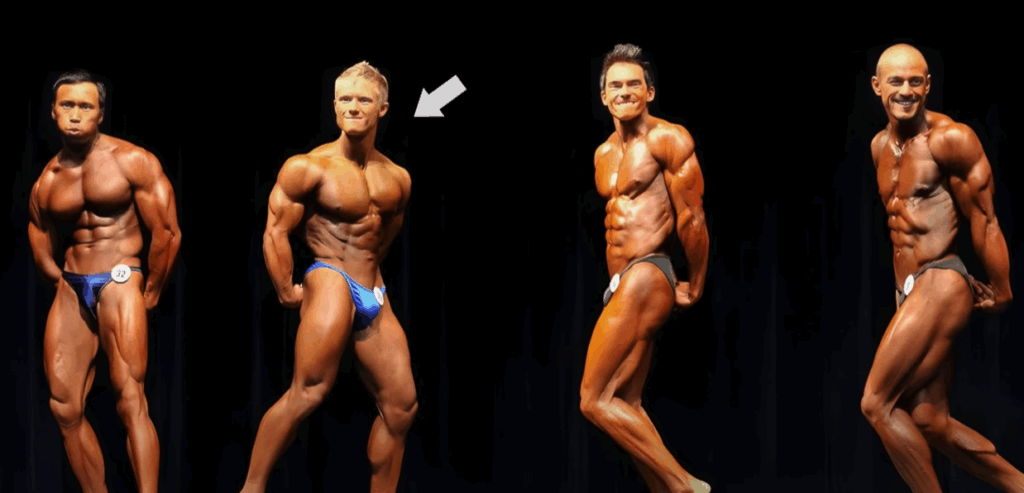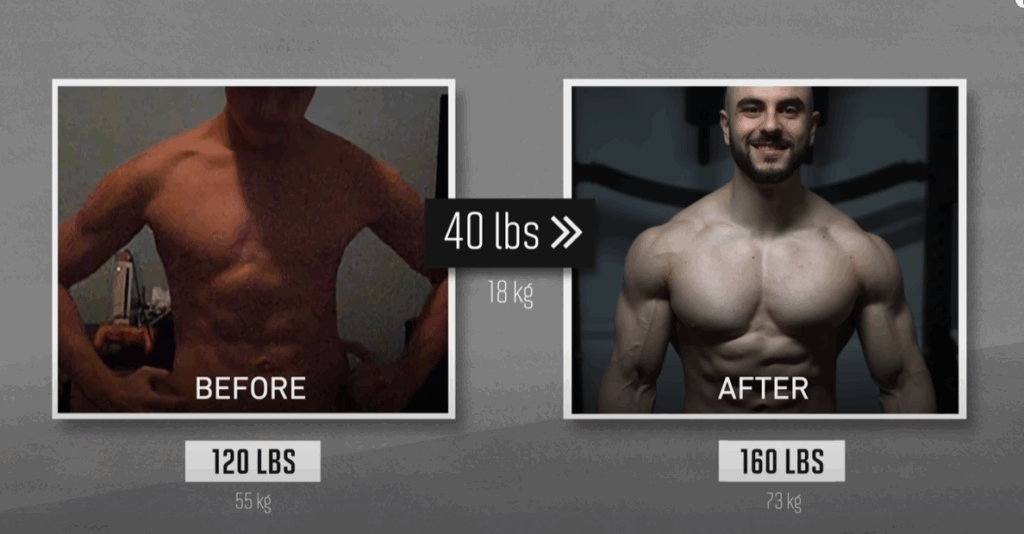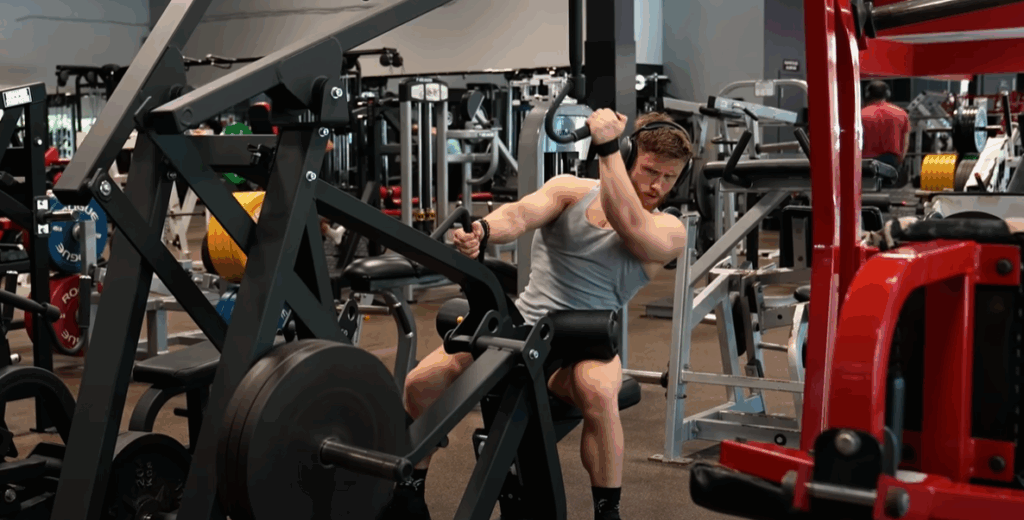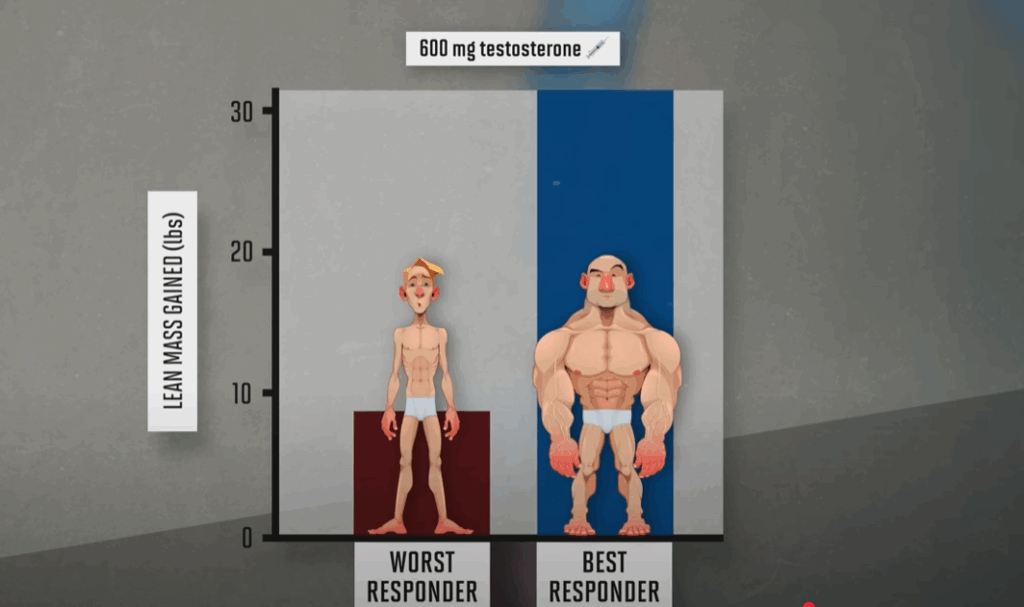Natural Muscle Growth vs Steroid-Enhanced Gains: What’s Really Possible?
How much muscle can you actually build naturally? And how far beyond that can performance-enhancing drugs take you? In this article, we’ll explore the reality of muscle growth through natural training and compare it to the muscle-building effects of anabolic steroids, using scientific studies and real-world examples to separate fact from fantasy.

How Much Muscle Can You Build Naturally?
The human body has limits—especially when it comes to building lean muscle mass without the use of drugs. While genetics, training intensity, and nutrition all play a role, there is a relatively consistent pattern in how much muscle most individuals can gain naturally.
For men, research shows the upper limit of natural muscle gain typically falls between 20 to 40 pounds (9 to 18 kg) over a lifetime of training. Women, due to hormonal differences, usually top out around 12 to 24 pounds (5.5 to 11 kg). Most of this muscle is gained during the first five years of consistent resistance training, especially if training and nutrition are dialed in early.
Real-World Natural Examples
Let’s consider the case of a seasoned natural bodybuilder who’s been training for over a decade. After 15 years of consistent, drug-free training, they may have added about 25 to 30 pounds of muscle. The gains often come quickly in the first few years—typically around 20 pounds in the first five years—then slow to a crawl as the trainee approaches their “genetic ceiling.”
Take someone like Alex Leonidas, a YouTuber and natural lifter, who reportedly gained about 40 pounds of muscle over 13 years of training. At five foot six, he transformed from 120 to 160 pounds at similar levels of body fat, showing what’s possible with dedication and long-term consistency.
Another good example is Jeffrey Verity Schofield, who, at six feet tall, increased his weight from 150 to 193 pounds over a 10-year span—all naturally. Both of these cases required strategic bulking and cutting phases and consistent progressive overload in training.
The Science of Natural Gains
To reach your natural potential, several key principles must be followed:
- Train with progressive overload: Increase weights or reps over time.
- Train close to failure: Push muscles to near-exhaustion to stimulate growth.
- Apply sufficient training volume: Around 10–20 sets per muscle group weekly.
- Use exercise variety: Hitting muscles from multiple angles helps maximize hypertrophy.
- Eat in a caloric surplus: Building muscle requires extra energy.
- Hit protein targets: 0.7–1 gram of protein per pound of body weight per day is ideal.
Stick to this for 5 to 10 years, and you’ll likely be very close to your natural muscle-building limit.

What Happens When Steroids Enter the Picture?
Anabolic steroids fundamentally change the game. One landmark study from 1996 divided participants into four groups—some trained, some didn’t, and some used testosterone, while others remained natural.
The results were shocking:
- The natural lifters gained 4.4 pounds of muscle in 10 weeks.
- Those who took steroids and trained gained an average of 13.4 pounds.
- Even those who took testosterone but didn’t train still added about 7 pounds of muscle.
The participants received 600 mg of testosterone per week—a dose that’s considered high for hormone therapy, but relatively moderate for competitive bodybuilders.
A follow-up study in 2001 showed a direct correlation between testosterone dosage and muscle gain. Participants taking 600 mg weekly for 20 weeks gained nearly 20 pounds of muscle—without lifting a single weight.
That’s one pound of muscle per week, purely from hormonal enhancement.

Steroid Use in the Real World
To illustrate the drastic difference steroids can make, let’s look at professional bodybuilders who started naturally and later enhanced.
1. Shaun Clarida:
Before going enhanced, Shaun was already a world-class natural athlete, winning championships at 130 pounds (59 kg) at just 5’2″. After beginning steroid use, he added another 60 pounds of muscle—more than three times what he gained naturally.
2. Chris Bumstead:
The reigning Mr. Olympia in Classic Physique, Chris started lifting at 14 and reportedly gained 55 pounds naturally by the age of 19. After moving to the enhanced circuit, he added another 40 pounds, reaching 264 pounds in the offseason.
These examples demonstrate that steroids can effectively double, triple, or even quadruple muscle mass depending on genetics, training, and dosage.
Dosage Makes a Difference
While 600 mg per week of testosterone already produces significant changes, it’s not uncommon for elite-level bodybuilders to use several thousand milligrams weekly. According to insiders in the bodybuilding world, it’s not unusual to hear of dosages between 2,000 to 5,000 mg per week at the highest levels.
Genetics also play a role in how a person responds to steroids. In the 2001 testosterone study, the highest responder gained 31 pounds of muscle in 20 weeks—again, without training. That’s more than some natural lifters gain in their entire lives.
The Risks of Steroid Use
While steroids drastically accelerate muscle growth, they come with serious health risks, especially when used long-term or at high dosages:
- Cardiovascular issues: Increased risk of heart attacks, high blood pressure, and stroke.
- Hormonal imbalances: Leading to gynecomastia, testicular shrinkage, and infertility.
- Liver and kidney strain
- Psychological effects: Including mood swings, aggression, and dependency.
- Aesthetic side effects: Such as acne, oily skin, and male pattern baldness.
Even under medical supervision, there’s no completely safe way to use anabolic steroids. That’s why it’s recommended to exhaust natural potential first and fully understand the risks before considering enhancement.

Final Thoughts: Should You Stay Natural?
If your primary goal is long-term health and well-being, staying natural is the safest and most sustainable route. And even if your aim is physique-based, natural training can still deliver impressive results—especially over a decade or more of smart lifting and eating.
Steroids do work—and in many cases, their impact is far beyond what most expect. But they’re not magic shortcuts. They come with consequences, and they require the same discipline in training and diet to truly maximize.
Instead of comparing physiques and assuming bigger means better, focus on the principles behind the progress. Whether someone is enhanced or not, the best training advice stands on a foundation of science, experience, and consistency—not the scale or stage weight.



